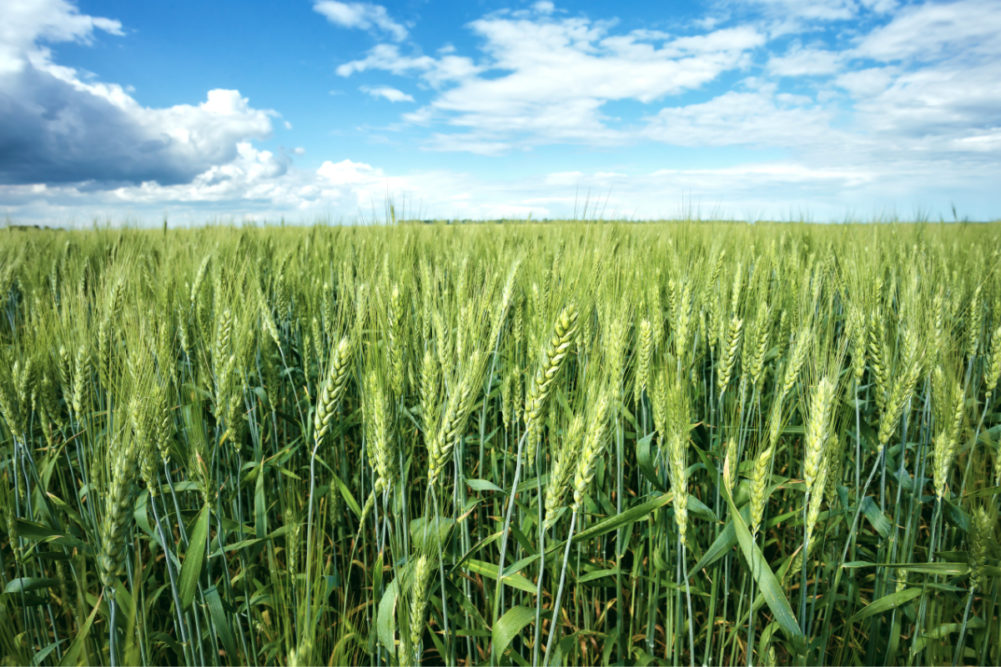KANSAS CITY, MISSOURI, US — Spring wheat seeding in the northern Plains region was ahead of a year earlier but well behind the average pace, the US Department of Agriculture said in its latest Crop Progress report. Wet soils and cool temperatures well into April were primarily to blame. At the same time, there was renewed interest in seeding hard red spring wheat over corn.
Late spring cold weather made some producers anxious about seeding in less-than-ideal conditions. The past few weeks have seen below-average temperatures reaching down into the lower teens. As late as the third week of April, temperatures dipped into the low- to mid-30s in parts of North Dakota.
Excess moisture has contributed fieldwork delays as well. The 2019 harvest in places was cut short by early winter that left fields extremely wet. The eastern areas of spring wheat country have continued to deal with too-wet soils. Ponding noted in some fields was indicative of some frost layer remaining in the ground.
Cold temperatures and wet soils hindered producers seeking to drill seeds with confidence that the seeds won’t languish for an extended period before germination.
The USDA in its latest Crop Progress report issued April 27 said spring wheat in the six principal production states was 14% planted, advancing from 7% a week earlier. The pace was ahead of 11% a year earlier, when planting was seriously delayed by rainy weather that generated intense flooding, especially in South Dakota. The recent five-year average spring wheat planting progress was 29%.
Planting completion by April 26 was 5% in North Dakota (4% a year ago, 18% as the average), 36% in South Dakota (6%, 61%), 6% in Minnesota (1%, 30%), 61% in Idaho (55%, 61%), 11% in Montana (19%, 31%) and 88% in Washington (45%, 53%).
In a roundabout way, the coronavirus pandemic also may be slowing planting progress. Oil markets have tanked in the six weeks since most Americans began sheltering at home. That has decimated demand for corn-based ethanol, intensely pressuring corn prices, and turning some producers’ thoughts to seeding spring wheat instead of corn. A moving target in intended acreage would certainly contribute to putting planting progress behind pace.
“In southern South Dakota, a little bit in Minnesota and certainly North Dakota, the decline in ethanol output and the shutting down of some plants has corn economics driving planting decisions,” said Jim Peterson, policy and marketing director with the North Dakota Wheat Commission.
“Even though spring wheat prices aren’t that rosy, and they continue to slip, growers are betting on the speculative that come fall, prices will be better and wheat prices have a little more potential than corn,” he said.
Also a contributing factor has been the dramatic drop in demand seen at malt plants in some parts of Montana and western North Dakota.
“Some of those plants ship over to Europe, and some of the barley trade to Mexico has been hampered a little bit with less consumption at restaurants and tourist points,” Peterson said. “We’ve heard that in some cases, contracts are being pulled or backed out on, or the act-of-God clause is being invoked by the buyer, not the producer, so spring wheat is the next best option in some of those areas.”
The pace of corn seeding also could indicate intent to plant more spring wheat. The USDA said corn planting in Minnesota by April 26 was 40% completed, well ahead of 1% a year ago, and double the average of the past five years. That may be partly attributed to corn planted in southern regions of Minnesota, where soil temperatures have warmed sooner and where fewer acres of 2019 corn remained unharvested. But shifting intentions also could be behind the sharp advance for the latest week.
And in North Dakota there was “still a little bit of sting from some of the quality hits on corn last year, so there’s probably some uncertainty,” Peterson said. “There might be a little bit of indecisiveness in that number, too, not knowing how many actual acres of corn will get planted.”
That comports with a run on sales of certified spring wheat seeds and a return of some of the corn seed noted during the past few weeks, he said.
Overall, wheat market stakeholders weren’t overly concerned about the slow pace of seeding. Insurance deadlines for southern South Dakota were still about a week out. But denser spring wheat areas in northern South Dakota had until mid-May to seed or seek insurance payments.
Plus, growers were heartened by lessons from the delayed 2019 crop that still produced good yield despite some compromised quality.
“I think producers have learned that even though we seed the crop late, we can still pull off a pretty good crop,” Peterson said. “If we get well into May and continue to run double digits behind normal, then I think we’ll start to be concerned that some acres are switching to other crop.”






